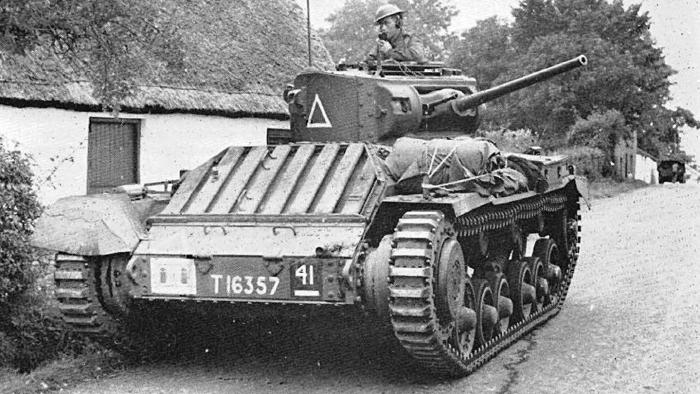Although overshadowed by more famous British tanks the Valentine was produced in greater numbers and accounted for about 30% of British tank production during World War Two
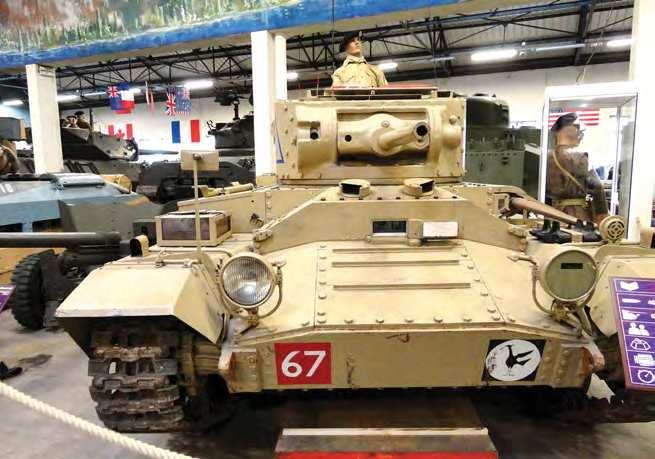

The Valentine tank was unusual in that it was designed as a private venture by Vickers and not to a general staff specification. It was meant to be an infantry tank, but cheaper and easier to build coupled with greater mechanical reliability than the Matilda II.
The origin of the name Valentine is not definitively known, although it is connected in various ways. The design was shown to the War Office just before Valentine’s day 1938, while the middle name of Vickers’s chief designer, Sir John Carden, who had been killed in an air crash, was Valentine. An acronym of Vickers full title, Vickers Armstrongs Limited (Engineers) Newcastle-upon-Tyne, was Valentine. Whichever one you believe, the Valentine was formally named ‘Infantry Tank Mark III’ by the War Office, but to the tank crews, it was always the Valentine, or affectionately ‘Valley’.
The running gear was based on the A10 cruiser tank, an earlier Vickers design. It was armed with a 40mm two-pounder main gun and a 7.92mm co-axial Besa machine gun. The armour was 60mm thick on the hull and the turret front and sides. Weight was to be similar to the A10’s 16 tons. To enable the vehicle to have this armour protection, stay inside the weight and cut down the cost, the Valentine was a small tank which restricted the turret dimensions and made installing a larger gun difficult.
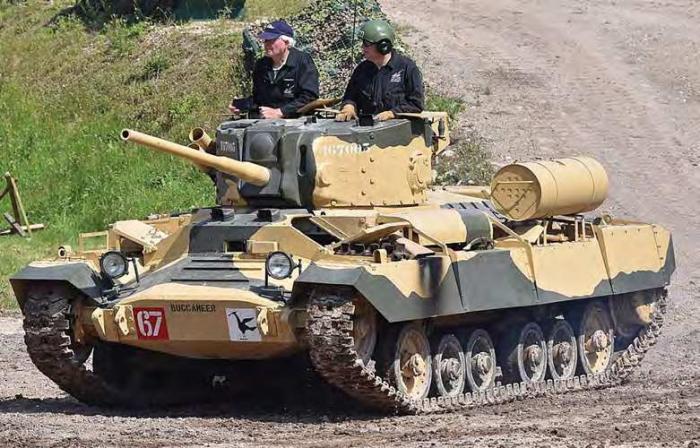
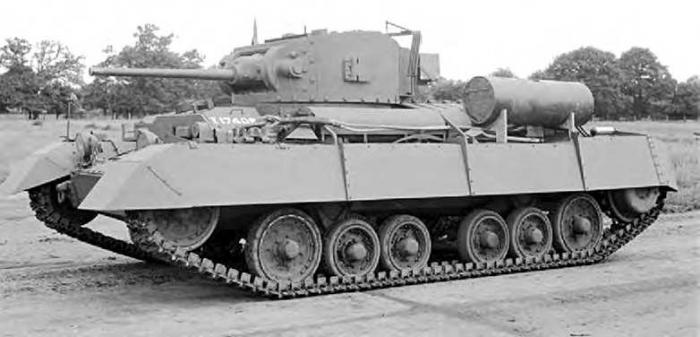
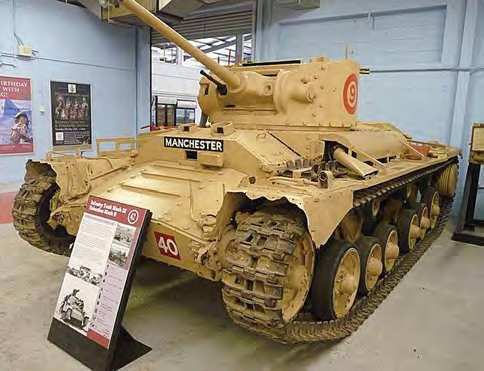


Another disadvantage of the height/ weight consideration was that the turret was not fitted with a commander’s cupola, something the War Office had wanted. This restricted the commander’s ability to see without exposing his head and shoulders. The small two-man turret meant the commander had to act as loader as well as command the tank. This was even more difficult when he was a troop or squadron commander with increased responsibilities. A radio was installed in each Valentine turret despite its small size.
Valentines were produced in 11 versions differing in powerplant and armament. Top speed was 15mph, the same as the Matilda but the Cruiser suspension enabled the Valentine to keep this speed when turning or crossing rough terrain when the Matilda had to slow down. The first production Valentine, the Valentine I, was fitted with an AEC petrol engine designated A189. Later models, Valentine II and Valentine III had a more powerful and economical AEC diesel engine A190. Both had five-speed clash-type Meadows gearboxes. Later models IV to IX had a more powerful engine still, the GMC 6.7 lit S Type 6004. The last Valentines designated IXs, Xs and XIs received an up-rated Type A 6004 engine. In this way, the Valentine’s performance was improved by better, more powerful engines. From the IV onwards, the gearbox was by Spicer with clash gears in first and fifth and synchromesh in second, third and fourth gears.
‘Entering service in November 1941, the Valentine was immediately sent to North Africa’
As previously stated, the Valentine was designed with a two-pounder main armament. In I, II, IV and VI this was fitted in a two-man turret accessed via a large two-piece hatch in the roof. The turret was enlarged to accommodate a third crewman in Valentines III and V. The commander was squeezed in directly behind the gun recoil shield. Although this left him free to command the tank and troop or squadron if required, it must have been a bit scary when the gun recoiled. The three-man turrets had a three-piece access hatch with a periscope in the front part.
The Valentine IX supplied from late 1942 to mid-1943 was armed with a six-pounder gun in a two-man turret. Unfortunately, there was no co-axial machine gun. The co-axial machine gun was reinstated in the Mark X produced from July 1943. The final Valentine XI was armed with a 75mm gun in a two-man turret.
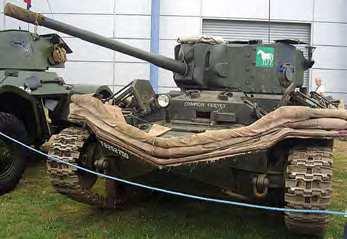
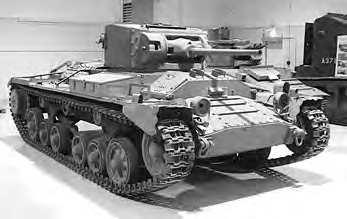
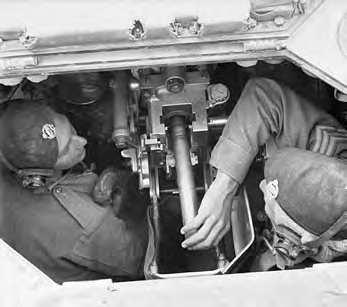
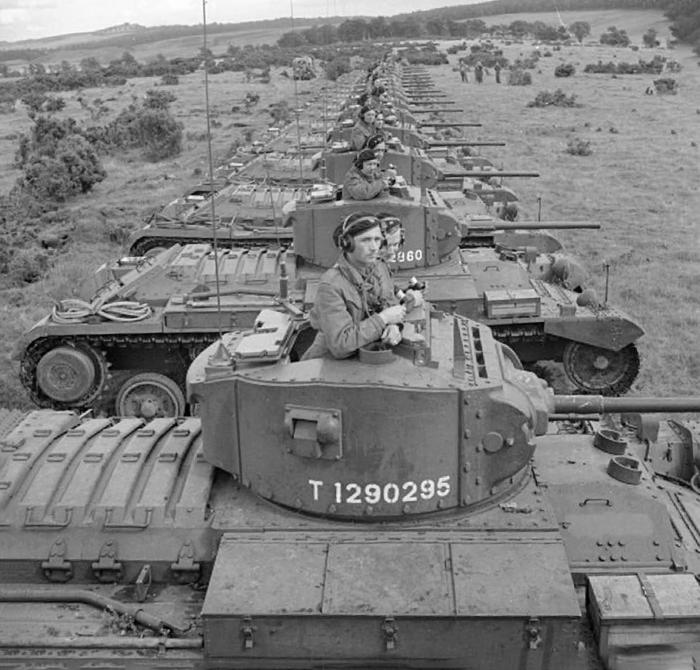
The driver sat in front of the turret. He had a small ‘letter-box’ armoured flap for front view and two periscopes in the flat roof above his head. Two access hatches formed the sloping roof right and left sides to his station. This was designed to let the driver have a choice of escape should the tank be hit and the main armament impede his exit.
Canada also manufactured the Valentine. Most were shipped as lend-lease to the Soviet Union as VI and VIIs. New Zealand also obtained Valentines, the II, III, IV and Vs. The New Zealanders adapted some by changing the two-pounder for a 3in howitzer, previously not thought possible. These were designated Valentine CS (close support.)
The petrol engine Valentine I was kept in the UK for training. All other variants were sent abroad on active service and took part in the fighting. Some Valentine IXs were equipped with Duplex Drive (DD). The tank could be driven by its tracks on land and a propeller with flotation screens for amphibious assault. These were used for training in the UK in readiness for D-Day, but only Sherman DDs were involved on June 6, 1944.
To the tank crews it was always the Valentine, or affectionally ‘Valley’’
The Eighth Army in the western desert found a need for an armoured self-propelled artillery piece. About 150 Valentine chassis were built with a 25-pounder field gun mounted in a large armoured fixed casemate on top.
This was christened the Bishop as the British called self-propelled guns after clergymen and it served from October 1942 to summer 1943. Although welcome as a stopgap, the Bishop was not considered a success due to the limited range and traverse of the field gun and the cramped conditions for the gun crew in the fighting compartment. They were replaced by the US 105mm Priests based on a Sherman chassis. Some Bishops, however, soldiered on in Italy until 1944.
A more successful Valentine conversion was the Archer self-propelled anti-tank gun. The potent 17-pounder gun was mounted on a Valentine chassis but faced backwards over the engine decks: the rear heavy arrangement increased cross-country and uphill climbing performance. The gun had limited traverse and the vehicle was driven backwards into a firing position. This meant that it could be driven quickly forward if threatened from the flanks, a feature which endeared it to crews along with its low silhouette and well-arranged fighting compartment. Archers were used in anti-tank battalions in infantry divisions from October 1944. About 665 were built.
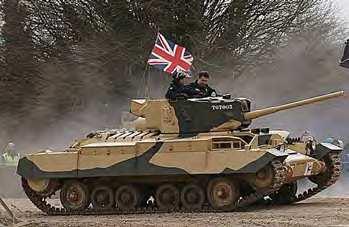
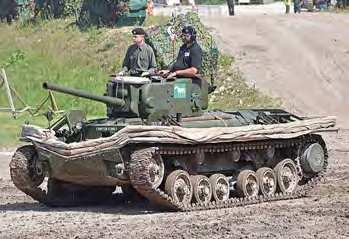
SPECIFICATIONS
Type Infantry tank
Origin UK
Manufacturer Vickers Armstrongs and various
Years manufactured 1940-44
Number built 8,275 (1,420 built in Canada)
In service 1940-60
Armour 0.31 to 2.56in (8-65mm)
Armament
Valentine I-VII QF two-pounder (40mm)
Valentine IX to X QF six-pounder (57mm)
Valentine XI QF 75mm
Secondary armament 7.92mm Besa machine gun with 3,150 rounds
Engine
Valentine I AEC A189 9.6 l petrol
Valentine II, III and VI AEC A190 Diesel
Valentine IV, V, VII-XI GMC 6004 Diesel
Transmission Meadows Type 22. Five forward and one reverse.
Suspension Modified three-wheel Horstmann
Fuel capacity 36 gallons
Operational range 90 miles (140km) on road
Maximum speed 15mph (24km/h)
Steering Clutch and brake
Crew
Valentine I, II, IV, IX-XI: three men – commander, gunner and driver
Valentine III and V: four men – commander, gunner, loader and driver
Dimensions (overall)
Mass 16 tons
Length 17ft 9in (5.41m)
Width 8ft 7.5in (2.63m)
Height 7ft 7.5in (2.3m)
The Valentine was also used as a testbed for a bridge layer, flamethrower and a mine destroying flail tank. None were put into production, but the test results were used for other vehicles including the highly successful Churchill Crocodile flamethrower tank. A more successful variant was a Valentine chassis equipped with a scissors bridge. Some were used in north-west Europe when there were not enough Churchill Bridge layers available. Each armoured brigade in Italy and the India/Burma theatre had six Valentine bridge layers.
Entering service in November 1941, the Valentine was immediately sent to North Africa where tanks were desperately needed. It entered service with 8 RTR and took part in Operation Crusader. Later the Valentine equipped 23 Armoured Brigade composed of three Territorial Army tank regiments, 42 RTR, 44 RTR and 50 RTR. Due to a shortage of cruiser tanks, the Valentine was often used in a similar role and thanks to its speed, manoeuvrability and the elan of the crews, it coped well.
Valentines continued to support the infantry with the 23rd Armoured Brigade being highly respected by troops who had previously felt let down by British armour. This was echoed by the tough and begrudging Australians. The three-man turreted Valentine III and Vs were allocated to troop and squadron commanders to free them for command duties. Some commanders in the II and IV variants had preferred to act as gunners rather than loaders when in action against the enemy.
Valentine losses were increased by the poor tactics of senior commanders who insisted that British tanks chase German armour and attack anti-tank gun screens head-on. This was not a fault of the tank or its crew, but a failure of command to evaluate German tactics and not fall into a repeated trap set by Rommel and his staff.
By the time of the second battle of El Alamein in October 1942 Valentines were considered obsolete with the arrival of more modern Grant and Sherman tanks. They were meant to be relegated to second-line duties but were never far from the fighting. After the breakthrough at El Alamein, Valentines took part in the pursuit of Rommel’s desert army across North Africa. Although worn out, they proved their mechanical reliability and toughness by carrying out the chase to Tunis. Some Valentines’ front idler wheels wore out, but the crews simply shortened the track wrapping it around the front road wheels and carried on. The Valentine then reverted to its infantry tank role and carried Scots Infantry of 51st Highland Division into Tunis while regiments formed part of ‘Monty’s Foxhounds’ chasing the ‘Desert Fox’ out of Africa.
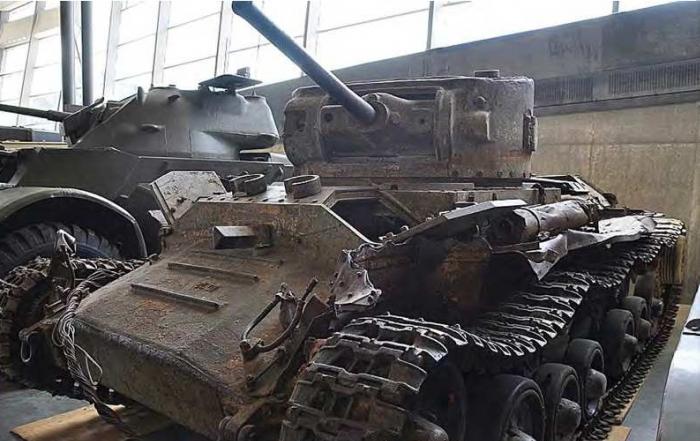
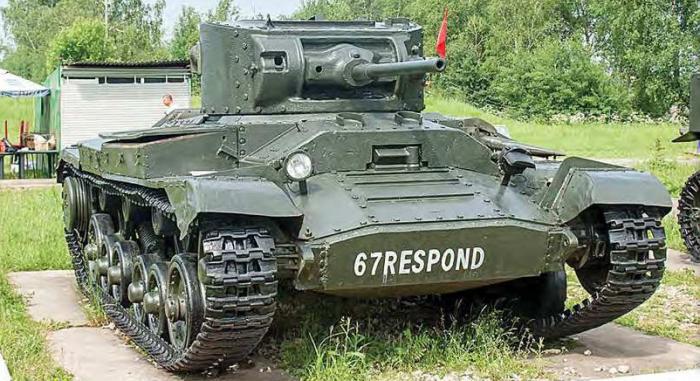
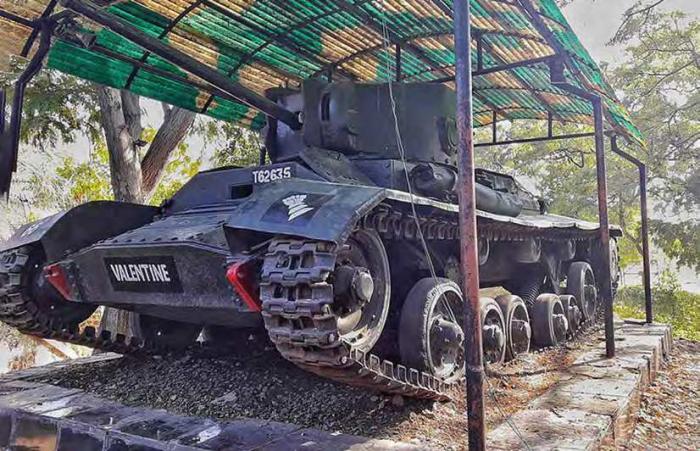
In December 1942 Middle East Command considered the Valentine obsolete. Even the six-pounder versions had inferior firepower to the newly acquired Sherman. The frontal armour was also inferior, but they were said to have better side armour. It was noted that the mechanical reliability was as good as the Sherman. Despite these weaknesses, Valentine tanks still took part in the assault on the Mareth Line in Tunisia in March 1943, but the sixpounder Valentines IX and X were found wanting in firepower due to the lack of an effective HE round.
Some Valentine IX and Xs took part in the invasion of Sicily, but most regiments had converted to the Sherman. The best condition Valentine tanks were handed over to Free French forces in North Africa where they were used for training. In north-west Europe some Valentine DDs and bridge layers were kept in reserve but not used in action. Archers were used by infantry division anti-tank regiments with considerable success. Valentine XIs were used as troop and battery commander’s chargers and with the guns removed for battery forward observers. No Valentine XI took part in tank vs tank combat.
Before being replaced with Lees, Grants and Shermans, several hundred Valentines were sent to the Far East. These were the II and III variants allocated to 146 and 150 regiments (Royal Armoured Corps). Valentine bridge layers were extensively used in Burma while the hero of the NHS, Capt Sir Tom Moore was pictured sitting on the front of a Valentine IV during World War Two. Many British built Valentines and almost all the Canadian-built vehicles were sent to Russia under the lendlease protocol. Russian crews liked their reliability, mechanical simplicity and small size that was easy to conceal. They also considered the armour protection adequate but the main armament inadequate. They attempted to replace the six-pounder on the Mark IX and X with their own 76.2mm gun as on the T-34 without success.
‘In my opinion the Valentine has not had the respect that it so deserves’
Snow and ice tended to pack up between the guide horns in winter weather. Many were allocated to Soviet reconnaissance units including one that was the first to enter Berlin. So, the little Valentine was possibly the first Allied tank to enter the Nazi capital.
Post-war Britain kept the Archer in Royal Artillery and Royal Armoured Corps until the early 1950s. New Zealand continued to use 186 Valentines with the last being retired by 1960.
Egypt had some Valentines that remained in the Canal Zone with about 200 Archers. Many of the latter were used in the 1956 Suez War and several were captured by the Israelis. India received 344 twopounder armed Valentines with several scissors bridge layers. Jordan purchased about 36 Archers from 1952-53. They equipped the Arab Legion Armoured Corps. Portugal obtained several from post-war Canadian training stocks. Turkey got 200 two-pounder Valentines from surplus Middle East stock in 1943. One is preserved in the Turkish Tank Museum equipped with a semi-circular mount for an anti-aircraft machine gun over the turret. One was a bridge layer which was used in the 1974 invasion of Cyprus – the last operational use of a Valentine 33 years after Operation Crusader.
With more than 7,300 gun tanks built in the UK, the Valentine served in front line units until the end of World War Two. It was used successfully as an infantry tank, a cruiser tank, a training tank and as a basis for self-propelled guns and specialised variants. It gained great affection from its crews, was simple, mechanically reliable and versatile. In my opinion, the Valentine has not had the respect that it so deserves.
